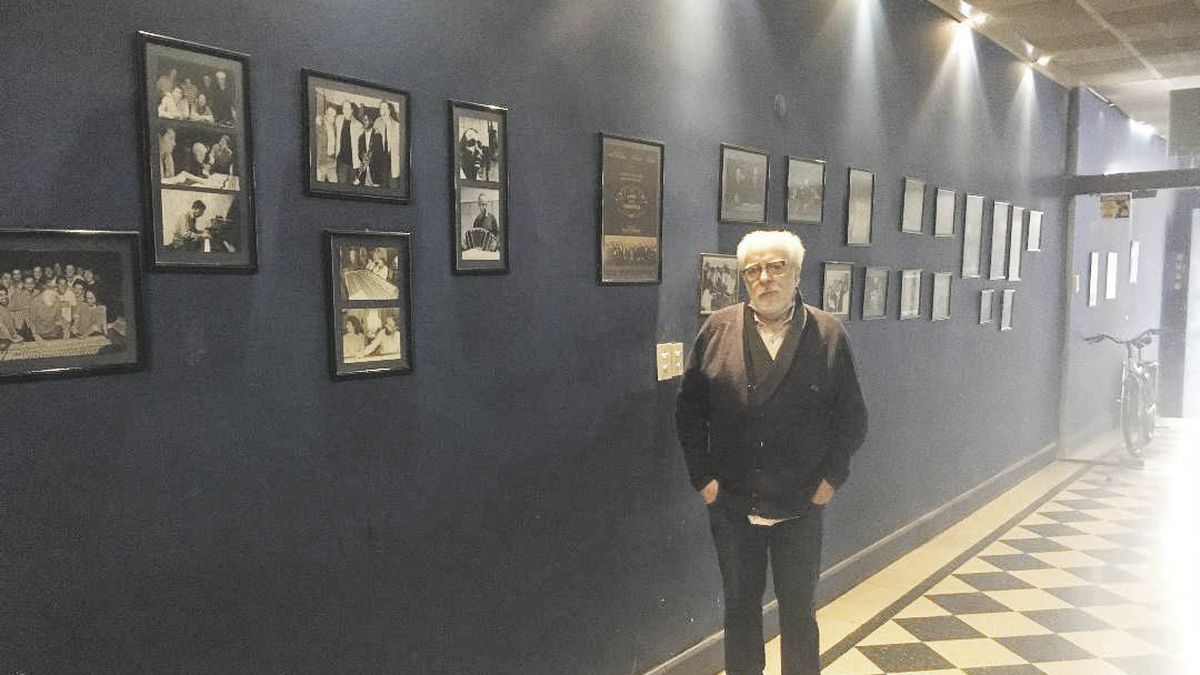For a company that basically requires imported supplies, this survival is almost a reference to Les Luthiers’ first album, “Sonamos despite everything”, which was also recorded at ION. In this 2022 he has all the hours taken as in his best times. Acedo, who started as a cadet and apprentice in 1959 and today heads the firm, knows that top musicians prefer ION for its technical quality and the fact that it is the only one in Buenos Aires big enough to record an orchestra. complete symphony; anyway, he points out a detail that has always marked the music industry. “If we had the extra long weekend with busy studios, this has not only to do with the recovery after the pandemic but because, in a business like this, many musicians have another job until they succeed and are accepted massively.”
ION’s story began about three years before Acedo’s arrival at age 16. He was founded in 1956 by the Hungarian couple Tiberio and Inés Kertesz. However, his family was always close to the birth of the studio, as he now tells in one of the offices of the same building that he helped to move in January 1960: “Tiberio Kertesz and his wife had come to Argentina fleeing from the war. They were Jews. He was a cellist and soon began to play in the National Symphony, where he was the concertmaster. The first ION was in Díaz Vélez and Medrano and it was very small, especially when compared to the current one. Tiberio had obtained a small contract to record the Symphony, so he bought a portable Ampex equipment and recorded before each concert. Then they opened the studio where they mixed those recordings live. He didn’t care what kind of music was recorded, and he rented out the studio to professionals and amateurs alike. The first time I entered the old studio there was Los Tammys, who were very popular, and then they left and a singing teacher came with her students. My old man, since he played in the orchestra with Tiberio, asked him to give me a job. I helped in the move to the current address of Hipólito Yrigoyen y Alberti, in Balvanera. This was a party room and it was conditioned by Tiberio for all the acoustics that were needed”.
Since that January 2, 1960, when the definitive headquarters was inaugurated, no other change was necessary, although the old ¼-inch Ampex equipment in which the masters were made is no longer there. Yes, there is the long entrance hall with the photos of the great musicians who recorded there. “The musicians of that time didn’t ask for anything unusual, they were used to surrendering to the sound technician, and it was always like that, whether they were tango, folk or even jazz, which was the genre that was recorded the fastest. I saw that recording Mono Villegas. They were always at a thousand and also had less budget. In tango, sometimes we made more important recordings in terms of the number of musicians. With Troilo we made two great albums, ‘Troilo For Export’ and ‘Pichuqueando’. In the latter he had his usual training. But “For Export’ was different: you have to think that we had 12 violins, and there were about 30 musicians in total. They took great care of Pichuco, and on many tracks he had bandoneon solos that we recorded separately and then mixed giving him a sound over the orchestra”.
Acedo remembers the day he discovered rock & roll in a movie theater, watching “Semilla de maldad” (“The Blackboard Jungle”) directed by Richard Brooks in 1955, and which included for the first time a song like “Rock Around the Clock” by Bill Halley and his Comets, a song that everyone danced to in the cinema hall. He explains that when they started recording rockers, everything changed, since ‘they asked for anything; even a musician who scheduled 12 hours of study just to record a voice. We had some instruments in the studio, for example a couple of double basses, an electric bass and a Steinway grand piano, but suddenly they asked us for something that we didn’t even know existed, like a Mellotron or something like that. And they asked us for weird sounds when we only had a bass knob, a treble knob, some reverb and nothing else.
It took a while for ION to record rockers, as rock musicians initially had contracts with multinationals that made them record in their own studios. But there was a time when not only in Argentina, but throughout the world, the recording industry changed. “They no longer wanted to have studios in different countries but only to publish music, and so they closed their branches and many more musicians came to ION. We even did things from more indefinable genres, like Les Luthiers, who recorded all their studio albums here and commissioned us to record their live albums, which we later mixed. They came with their strange instruments to see how they sounded in the studio and it really was great. At ION, not only were the first hits by Les Luthiers, such as ‘Candonga de los colectiveros’ or ‘Know the interior- Chacarera del lysergic acid’, but also some great experiments that were better known in Spain, such as the opera ‘Cardoso in Gulevandia ‘, which broke the record for the number of musicians in an ION recording, with an 80-piece orchestra”.
And what happened to the life of the Kertesz couple? “In the 1970s, Tiberio sold the studio to Fernando Gelbard, son of the economy minister. With the money they went to the United States and set up a small studio in Los Angeles. At one point they had a hit, sold it and went to Las Vegas, where he lived his last years very well playing in the casino orchestras. He then retired and came to visit a couple of times. They both died about 15 years ago. According to Acedo, the passage from analog to digital does not cause any crisis, however, the new strategies of multinational record companies do generate it in recording studios around the world. “For me it doesn’t matter if the master is going to be on open tape or on a flash drive or a hard drive, my job will always be for the musician to have a lectern where he can put his score and his lyrics, and I have the microphones on”.
Source: Ambito
David William is a talented author who has made a name for himself in the world of writing. He is a professional author who writes on a wide range of topics, from general interest to opinion news. David is currently working as a writer at 24 hours worlds where he brings his unique perspective and in-depth research to his articles, making them both informative and engaging.




